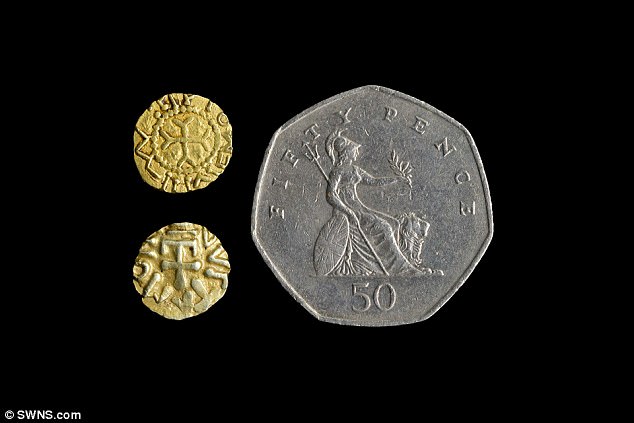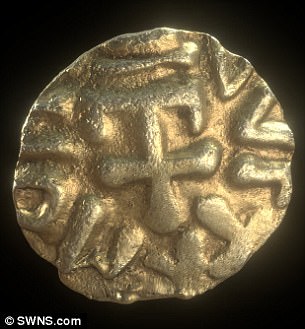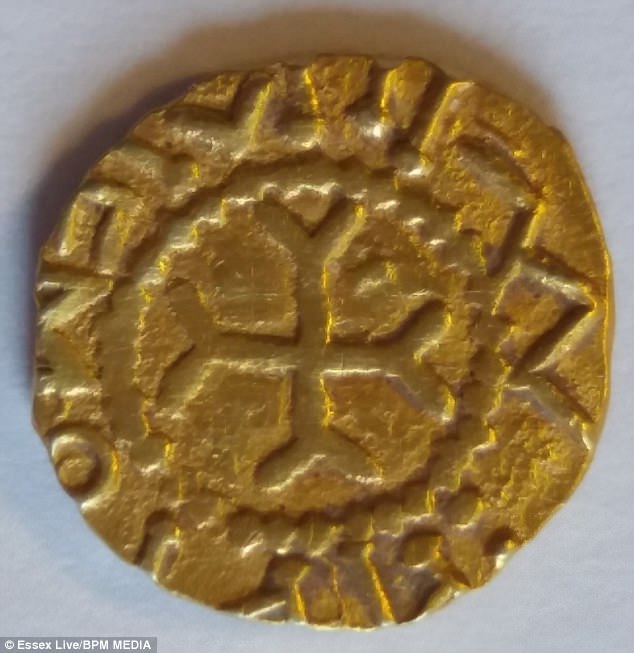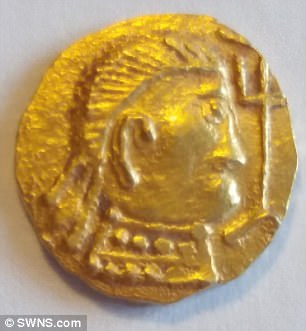Man Finds Buried Treasure of 1,500-year-old Gold Coins Worth Over $13,000 in English Field
/- Chris Kutler, 54, read article that coins might be in the area and started scanning
- Coins are 1.5 grams each, ~$13,000 total
- Merovingian style dating back to Dark Ages
- Technically a "hoard" from Royal burials
An Englishman named Chris Kutler has been hunting with a metal detector for over 25 years and just made the biggest discovery of his life.
He spent 4 days systematically scanning a 5,200 sq foot field in Chelmsford, Essex (~1.5 hours northeast of London) because he read an article suggesting there may be remains of treasure there. Chris had actually been there 18 years before when he found other rare Anglo-Saxon coins at that are now housed at the British Museum.
Ancient Coin "Hoard"
According to law, a treasure is considered "two or more coins from the same find, at least 300 years old, and contains at least 10% gold." So, technically, Kutler found a "hoard" of ancient coins.
These specific coins are called "Tremissis" meaning "a third of a unit," which measured 1.5 grams. It turns out the belonged to the Merovingians, a Salian Frankish dynasty that ruled the Franks for nearly 300 years in what is today's France starting from the mid 5th century.
Researchers believe these newfound gold coins were buried with an Anglo-Saxon King about 1,500 years ago. That would mean they're from the Dark Ages of 620-640AD. These kinds of coins are usually found buried with high-class people or even royalty.
“It was the best feeling in the world.”
“It is kind of the Holy Grail of metal detecting. It was an incredible feeling to find the coins.
When I found the first, I thought it was a wasp. I got a flash of yellow and threw it back but then I realised what it was.”
Treasure Hunter Methodology
When asked how he found these rare gold coins, Mr. Kutler actually did a lot of careful research and investigation before investing the time to scan locations. "I started collecting data about place names, I would locate the name of the place, and field names often indicate archaeological activity."
Then on the field, he used a simple yet very practical and systematic strategy. "I decided to rake the topsoil off and get down to the compact soil [underneath], and scanned the area off in 100 square meters, and did every one individually."
When asked about why he decided to return to the area when hearing possible more coins were hidden in the area after he'd already scanned it before, Mr. Kutcler said: "I thought I really need to do it because this is the last time I am going to do it. I needed to go back. If you find one coin there are probably many."
The official value of these Anglo Saxon gold coins will be appraised by the British Museum but may take up to a year for a complete analysis. Let's hope they don't go missing and forgotten like artifacts in the Smithsonian.
Sources:
https://en.wikipedia.org/wiki/Merovingian_dynasty











